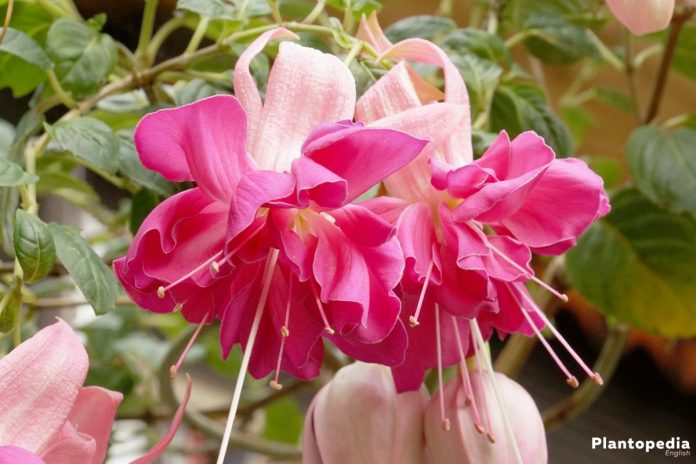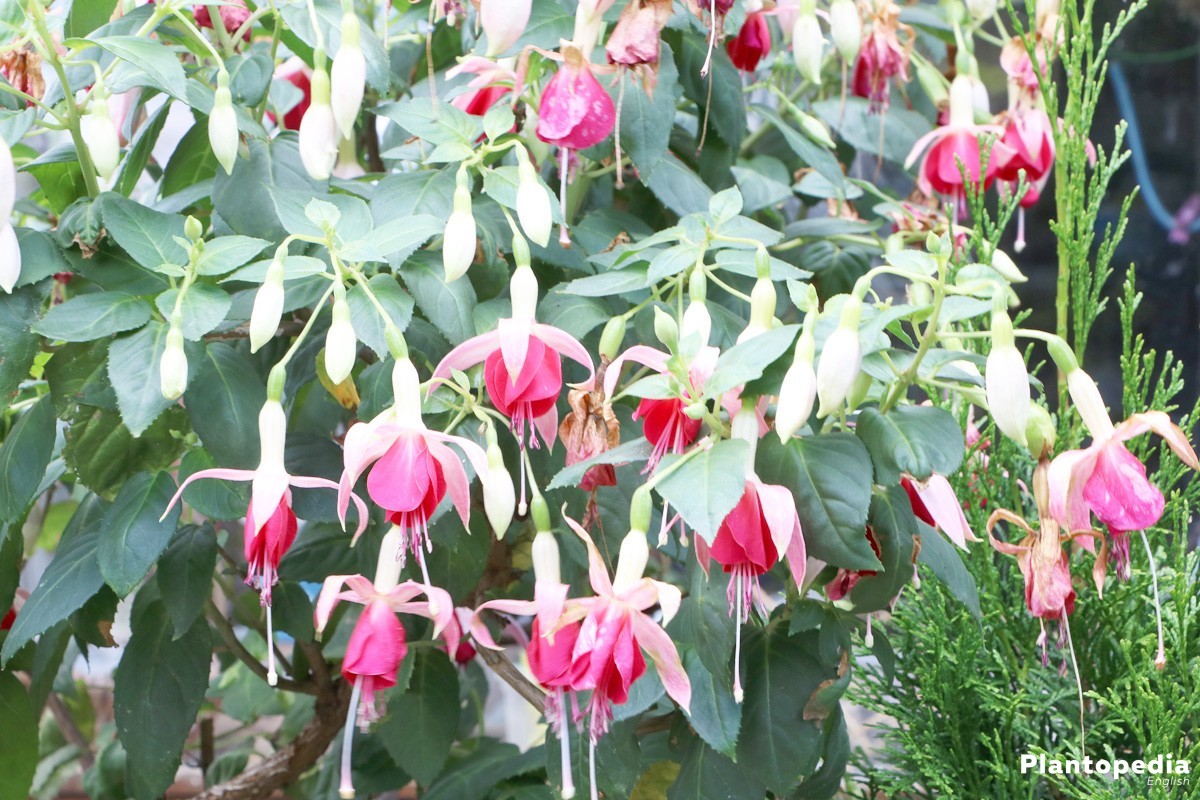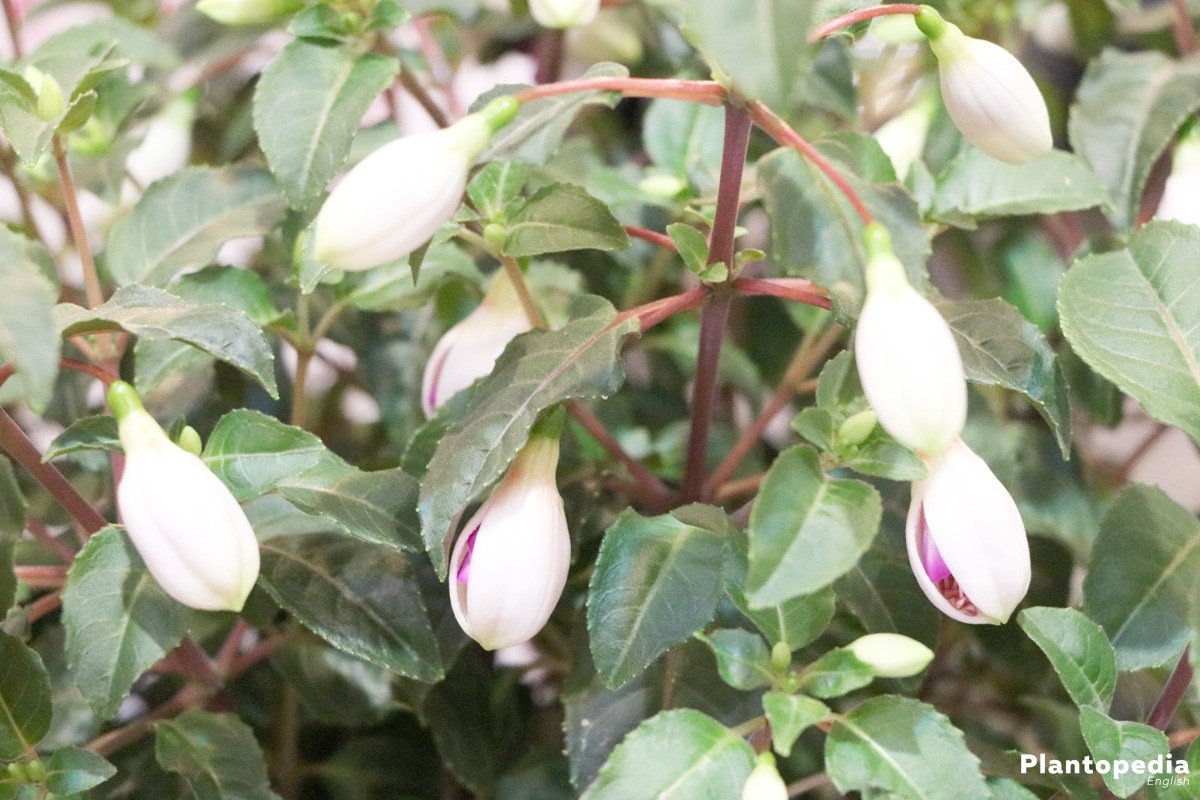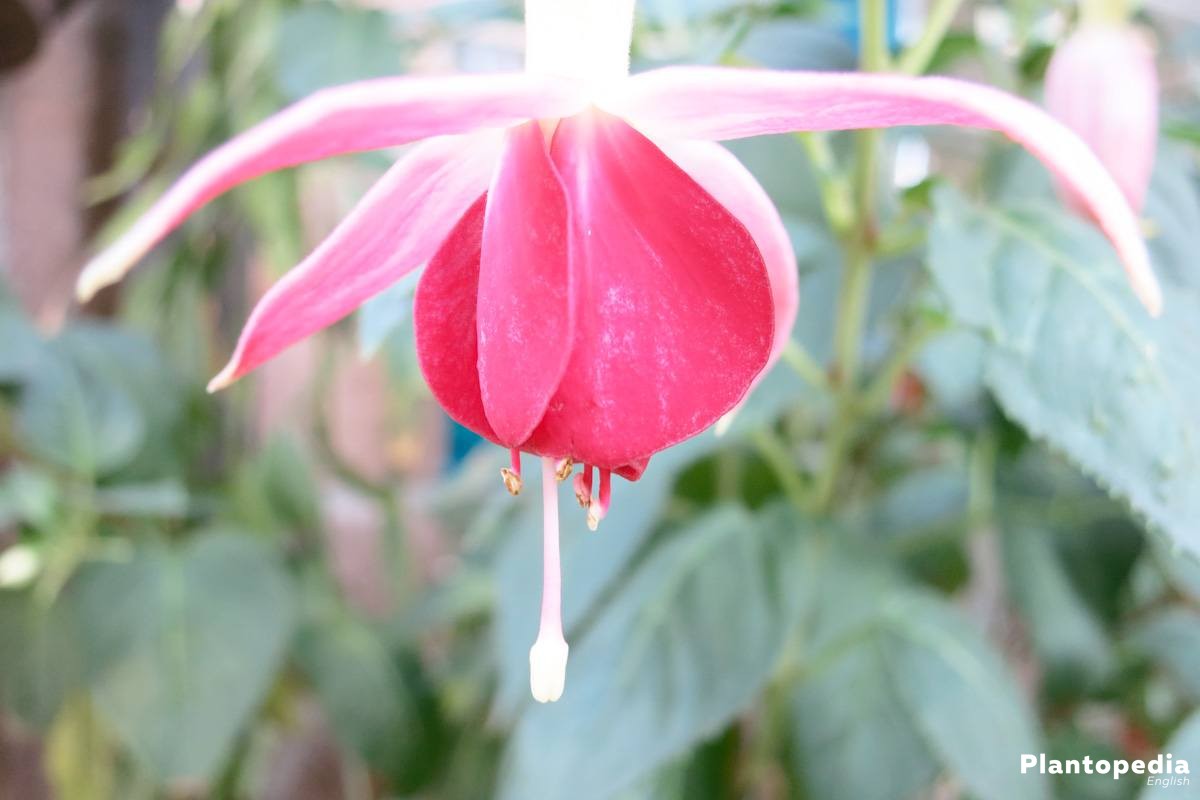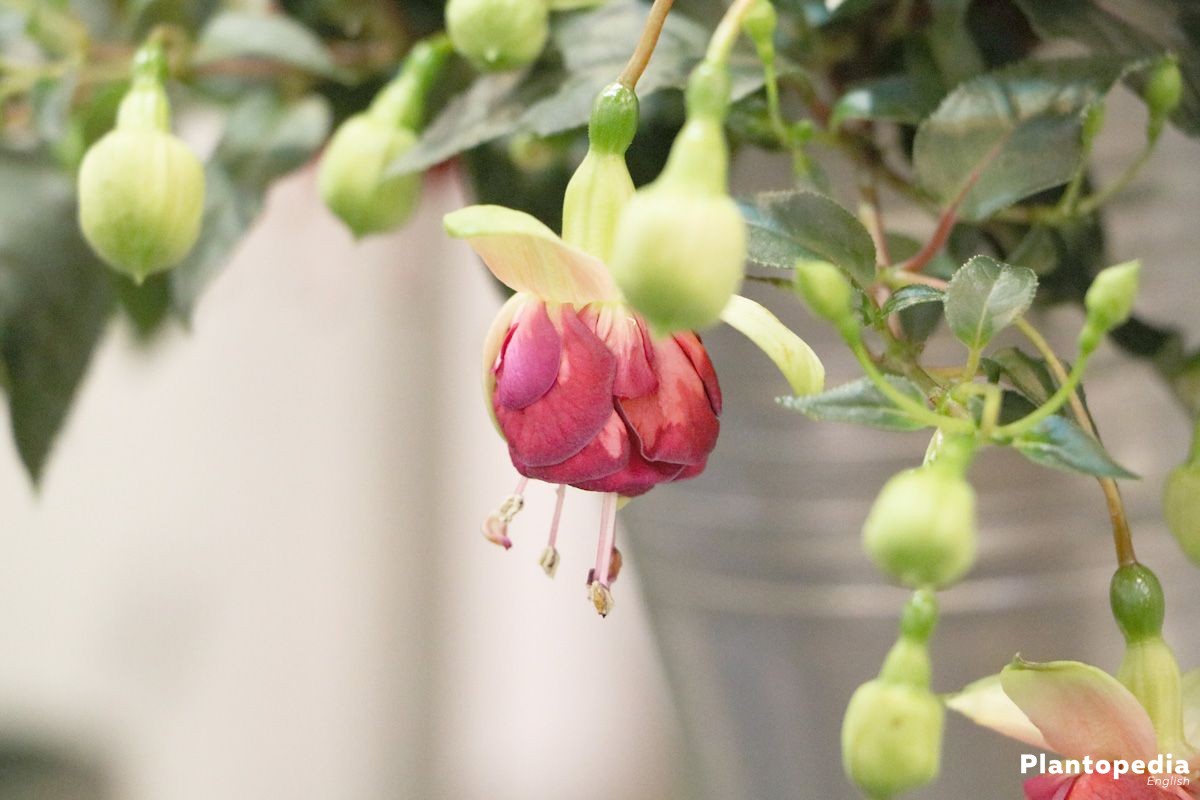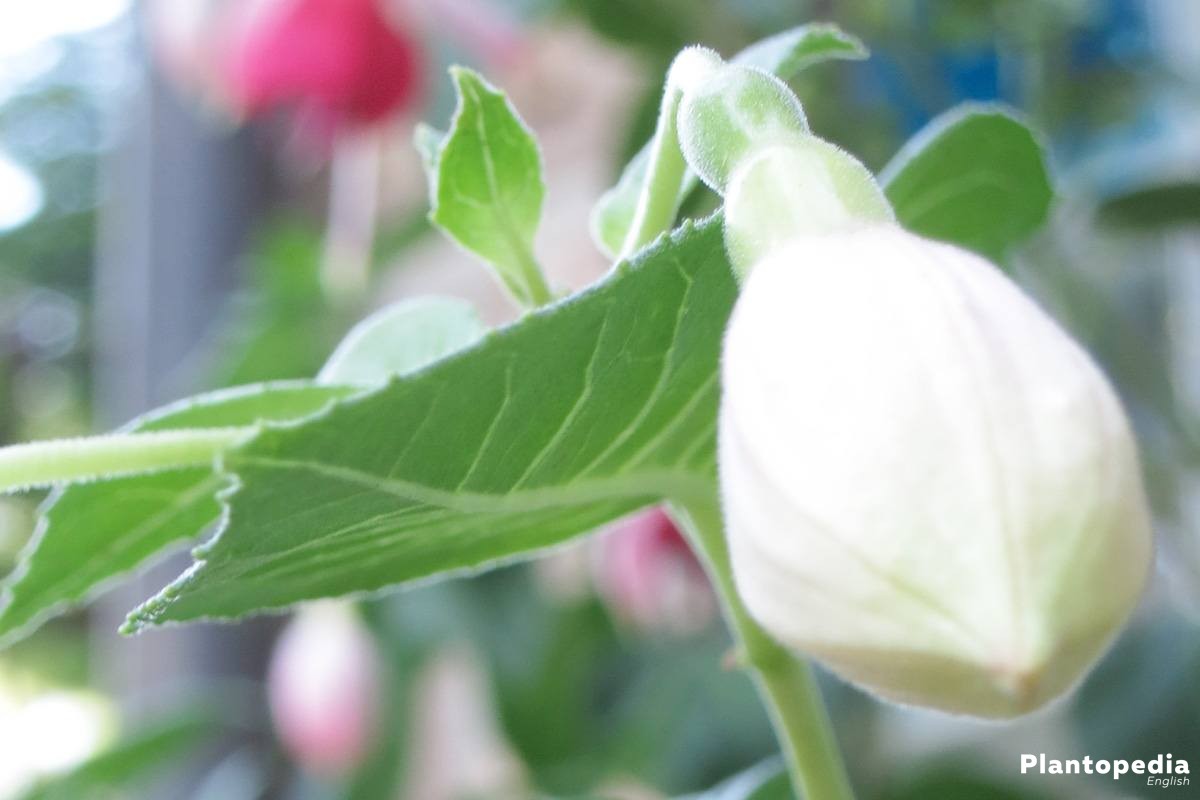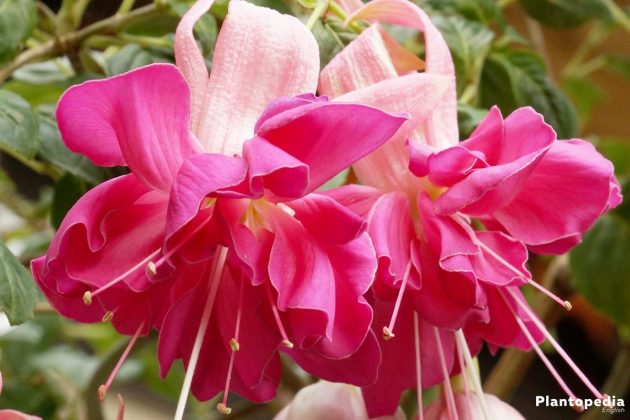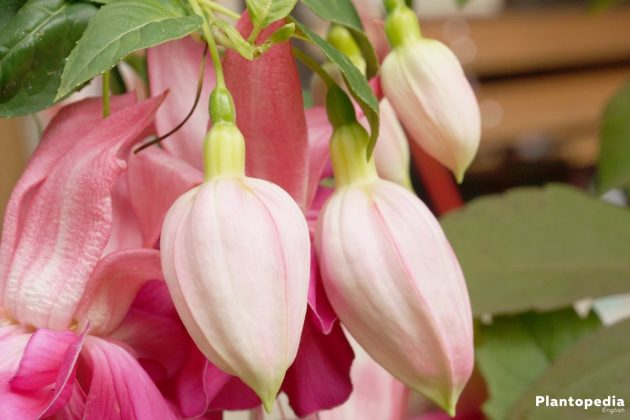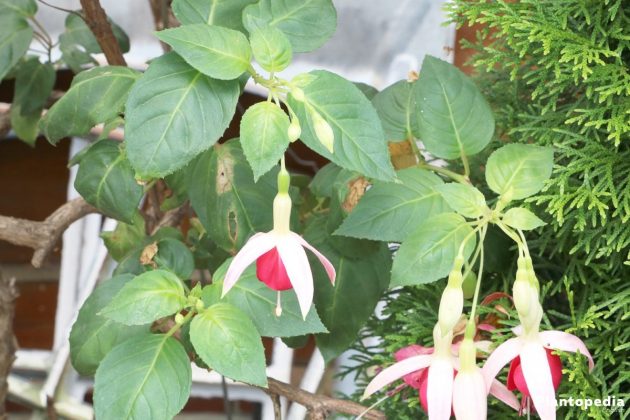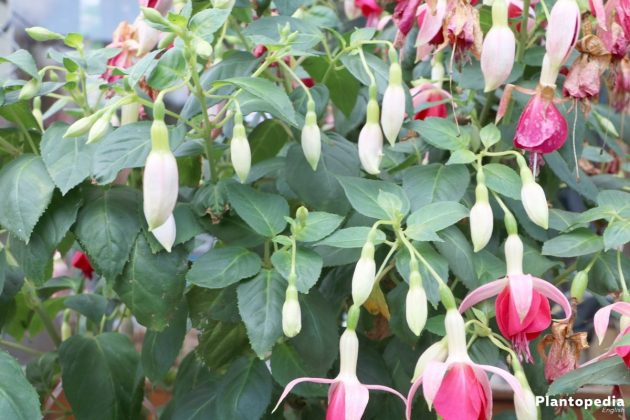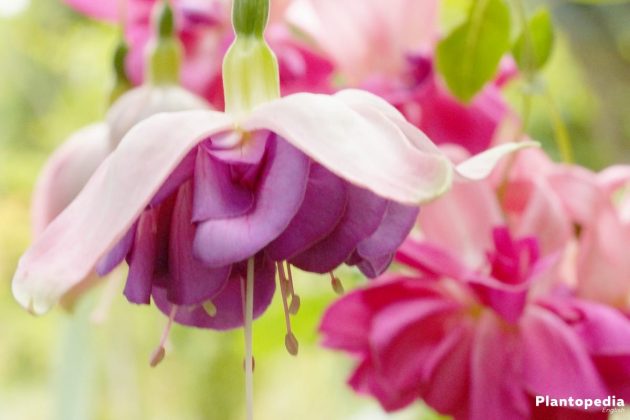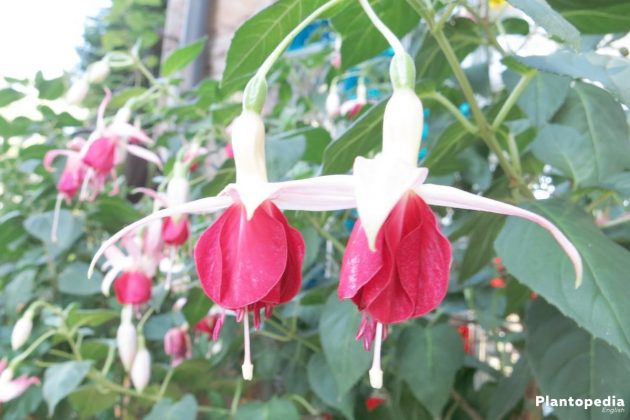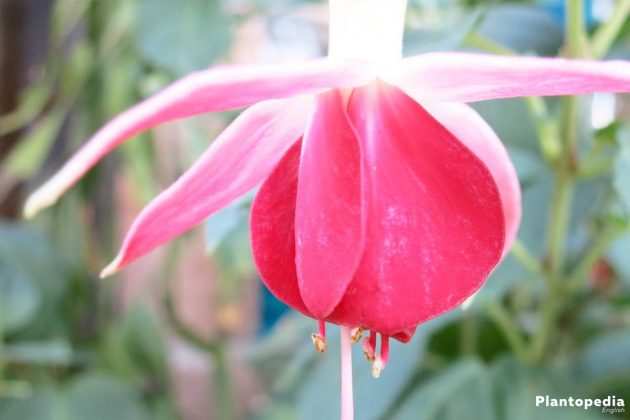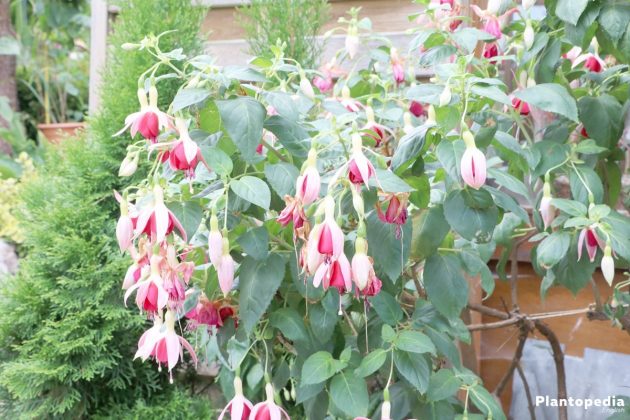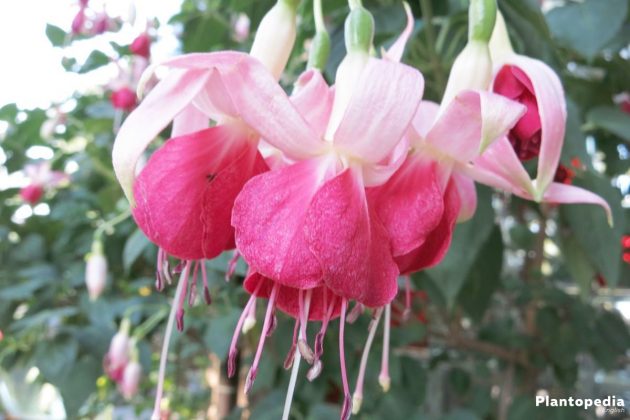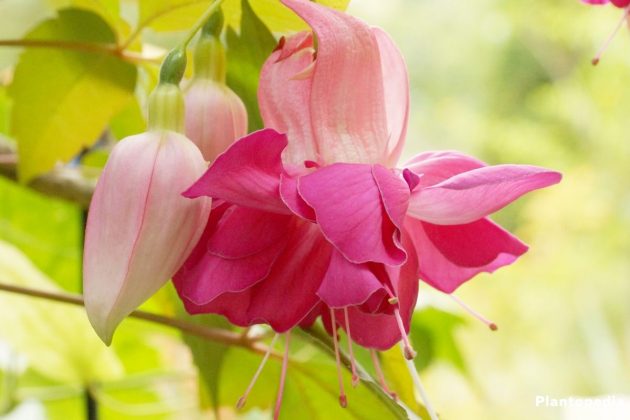Fuchsias have created a name for themselves as a real classic within creative compositions of plants for summer gardens. Thanks to the existence of hardy varieties, the colorful festival with its unmistakable flowers is not limited to balconies and terraces. Explore on this website how to these lignifying gorgeous flowering plants in tubs or flowerbeds. You will be sure to profit from this detailed set of instructions on tending and wintering.
Plant Profile
Contents
- Family: Onagraceae (willowherb family, evening primrose family)
- Genus Fuchsia with more than 100 species and 12,000 varieties worldwide
- Originates from the mountain forests of South America
- Lignifying, deciduous flowering plant with great variations in appearance
- Growth height in cultivation ranges between 20 to 150 cm (erect) and 80 to 400 cm (climbing)
- Flowering season (species-specific) from April to June or July to October
- unmistakable shape of the flower: bent sepals and 4 to 8 petals centered around a long tube
- elliptical leaves with long petioles and a slightly or considerably denticulate margin
- green, red or black berries in different sizes with few seeds
- depending on the species either hardy, hardy to a limited extent or not hardy at all
With their bowing, hanging flowers, fuchsias have established a reputation as indispensable classics within summer gardens. As lignifying decorative plants that will flourish either as a forb planted in a flowerbed as well as in a tub on the balcony, they can easily be worked into any creative layout plan. They draw attention to themselves at any growth height, regardless of their growth: erect, overhanging or trailing.
Care
Some of the most splendid varieties unfold their whole beauty in a very sunny spot, while others prefer medium shade. Learn on this site how to skillfully plant the striking subshrubs in tubs or flowerbeds. Our profound care instructions take into account all aspects of proper cultivation, including exemplary wintering.
Fuchsias are not suited for cultivation in indoor living spaces, because they suffer from the low humidity und limited light. Planted in tubs, window boxes or as shrubs in a flowerbed, these plants from the willowherb family can be applied in various ways.
Bedding plant
Plants in a flowerbed
Hardy fuchsias are closely related to the wild types and are, therefore, robust. From April to May, they sprout sturdy rods out of the wintered rootstock, which will bloom from July on until the first frost occurs. The low temperatures during winter cause the shoots to draw back almost completely in order to bloom again in the coming spring season. Read below how to skillfully plant outdoor fuchsias.
Location
Outdoor fuchsias flourish to be more compact and richer in flowers on a sunny site than they do in half-shady spots. Because their root system is very sensitive to heat, the ground surface should be shaded. If you cultivate your flowering shrubs with their head in the sun and their feet nice and cool, all your expectations will be fulfilled.
The following brief outline contains all important factors for the perfect spot to grow a garden fuchsia:
- sunny to half-shady site
- soil that is rich in humus and nutrients
- freshly-moist and with good water drainage
- ideally with a slightly sour pH-value between 5.5 and 6.5
The placement of plants that cover the ground or low-growing forbs provides the sensitive root balls with sufficient shade. A layer of mulch made of foliage, cut grass or bark serves this purpose just as well.
Planting time
Since winter hardiness does not develop until a fuchsia is well-rooted, spring turns out to be an adequate time for planting. Insert the young plants into the bed in mid-May at the earliest, given that weather forecasters do not announce any more soil frost. In locations with harsh winters, experiences gardeners wait for the cold spell around June 11th to be over. Planting should have been done by mid-July.
Planting
Put the fuchsia, still potted, into a container filled with water to soak the root ball. In the meantime, the soil in the selected spot is cleared from weeds, roots and stones. Thoroughly rake the soil until is shows a good crumb structure.
These are the following steps:
- scoop enough earth for a pan of 10 cm in depth to develop
- dig a hole for planting inside this pan, aiming for double the volume of the root ball
- remove the fuchsia from its pot and place it in the hole, 8 to 10 cm deeper than it was in the original pot and water afterwards
Initially, the hole remains uncovered. Wait until the transition from summer to fall to fill up the earth proportionally to the plant’s growth. This procedure ensures the protection of the rootstock against frost and desiccation during the cold season. If you have decided for ground-covering plants for shading, these will serve as protection in winter as well, so the hole is not necessary.
Tub plant
Planting in a tub
The large majority of fuchsias is not hardy enough to survive as an outdoor forb. Planted inside a tub or windowbox, these flowering shrubs embellish balconies, terraces and sitting areas. Read below what needs to be considered in the process of planting.
Planting container
In the exposed situation of tubs or window boxes, the root ball is exposed to even more summer heat than it would be in a bed. Therefore, choose a planting container made of a material that is not easily warmed by the sun’s radiation. Black plastic containers can only be considered if placed in a cooling clay pot or under a sunshade. In addition to that, every container should feature a water outlet at the bottom to prevent waterlogging.
Substrate
A plant you have propagated yourself or a newly bought fuchsia has other demands in terms of the substrate filling the pot than an adult, well-rooted plant. Commercially available potting soil is often fertilized for a period of up to six months. If the soil is stored at high temperatures for a longer period of time inside the garden center or at an amateur gardener’s, salinity increases dramatically, because the long-term fertilizer it contains is mobilized more quickly.
A young plant will turn into a ‘brine-fuchsia’ at high temperatures, because it suffers from the reversed osmotic pressure. When different concentrations of salt meet, the higher one pulls the lower one in. As a consequence, the salts in the substrate extract the intracellular water from the leaves, which will cause the young fuchsia to wither in spite of regular watering. This problem can be avoided by choosing the right substrate.
This needs to be considered:
- Plant young fuchsias into peat-free, slightly fertilized standard potting soil or special substrate for young plants
- Put well-rooted fuchsias into high-quality, peat-free tub plant soil that is rich in nutrients
- Optimize permeability by adding lava granules, perlites or coconut fibers
When purchasing soil for fuchsias, also make sure a pH-value between 5.5 and 6.5 is guaranteed. The value is given on the packing and producers usually abide by it, as independent tests have proven.
Planting time
Fuchsias planted in a tub can be put on display on the balcony or terrace by mid-May. Under the premise that the plants can spend the cold nights behind glass until then, nothing speaks against planting them from the end of March/beginning of April on. This has the advantage that the decorative shrubs are given a headstart in terms of growth so they are well along once the gardening season begins. Furthermore, the plants are considerably hardened due to the transition phase.
Location
Placed on the balcony, fuchsias fully thrive when given a spot where that allows them to enjoy mild sunlight in the morning or in the evening hours. They should not be exposed to the direct midday sun. However, these decorative plants do not mind a light summer rain.
Planting
Before planting fuchsias into a tub or window box, be sure to soak the root ball in water until no more air bubbles appear. Place a few clay fragments over the water outlet at the bottom for draining purposes before filling the container with the substrate. In order to avoid silting of the organic material, insert a water- and air-permeable fleece between substrate and drainage.
Remove the soaked fuchsias from their pot and, put them about 10 cm deeper into the ground and water them. In a window box of 1 m in length there is room for 5 to 7 plants. A hanging basket of 20 cm in diameter provides room for decorative display of 3 to 4 fuchsias.
Beds and tubs
Tending in beds and tubs
When it comes to tending, fuchsias in beds and tubs are mostly alike. The following section explains in details all aspects related to water and nutrient supply as well as appropriate pruning.
Watering
Fuchsias prefer a slightly moist substrate that is allowed to dry on the surface every now and then. Therefore it is necessary for you to check every morning by lightly pressing a thumb on top of the soil if the plant is in need for water. On warmer summer days, the plants are dried up until evening to the point at which they should be watered again. If a fuchsia can be observed with hanging leaves during a hot day even though the soil is moist, you should by no means add extra water.
This is the plant’s way of protecting itself against evaporation and it is not taking up water in this state. Fatal waterlogging would be the consequence. Only when the surface of the substrate has dried once again, it needs to be watered. We recommend the use of rainwater or decalcified tap water to preserve the soil’s slightly sour pH-value. Please do not frighten your fuchsias by pouring ice-cold water on top of a warm root ball.
Humidity
Even though fuchsias are not real plants of the tropics, increased humidity has a positive effect on their vitality and willingness to bloom. Therefore, spray the ornamental shrubs with decalcified water during the morning hours of summer. Filling the pot saucers with pebbles and water leads to evaporation and thereby a moist microclimate.
Fertilizing
From March to September, fuchsias are given are liquid fertilizer focused on potassium every 14 days. Compounds containing a NPK-mix in the ratio 16:9:22 have been proven very helpful. Freshly potted plants are given extra nutrients only once the supplies of the pre-fertilized substrate are depleted. Keep in mind that liquid fertilizer is not applied onto dry soil; instead, water first with a bit of clear water, then add the fertilizer.
Pruning
Fuchsias are not pruned in mid-season. Instead, consistently remove all withered flowers and leaves to create room for the buds that are situated underneath. By doing so, you will inhibit energy-sapping growth of berries.
This is what you need to know about pruning fuchsia correctly:
- garden fuchsias should not be pruned until March/April, then cut them back to 20 or 30 cm and thin them out
- in tubs and window boxes, they should be cut by two thirds before bringing them indoors
- at the same time, remove a dead and kinked twigs as well as the entire foliage
You can promote bushy and compact growth by cutting back the tips in April and May once or twice. Some species and varieties tend to put in a period in mid-summer when blooming stagnates. In this case it is advisable to prune weary plant just a little to give it new vitality.
Wintering in flowerbeds
Garden fuchsias do not withstand the winter outdoors without damage when they are unprotected.
This is how outdoor wintering will be successful:
- do not prune the decorative shrubs before winter
- preceding the first frost, cover the upper part of the roots with foliage, dried needle leaves or hay
- wrap the twigs into a breathable fleece
- if frost occurs on mild days during the time they have shed their leaves, water a little
On a frost-free day in March, your garden fuchsias are given an all-round pruning to shape and preserve them. Once no more temperatures below -5 degrees centigrade are expected, the roots can be freed and the cover removed.
Wintering in tubs and window boxes
Except for the few hardy varieties, the local winters are too cold for fuchsias. This is the reason they should be put inside well before the first frost occurs.
See below how to guide the exotic decorative shrubs through the cold and often dark season:
- cut back all shoots by two thirds of their length in late fall
- completely remove all remaining foliage
- store the plant containers in a dark, cool room with temperatures between 5 and a maximum of 10 degrees centigrade
- water very little and don’t fertilize
The radical pruning before taking them inside prevents pests that have settled inside the winter quarters from feasting on your fuchsias. Nevertheless, spray the plant with a nontoxic insecticide based on rapeseed oil to kill even the last grubs and eggs.
Creating space
To make sure healthy wintering does not fail due to of lack of room, experienced fuchsia gardeners resort to a time-honored method. For this purpose, they dig a hole in the garden big enough to hold all plants, with and without pots. This hole is covered with wooden and Styrofoam planks and. For additional protection, spread the dug-out material on top and cover it with old rugs, bubble wrap or similar things you may have at hand.
These traditional winter quarters does not require any special measure of caretaking apart from the pruning before putting it in. When choosing the site for this appliance, make sure that no water can penetrate the sides due to location on a hillside of a high groundwater level.

